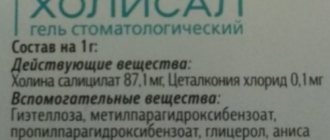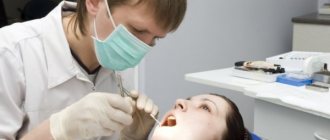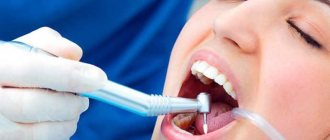How many hours before the procedure?
Before endoscopic examination of the digestive organs, patients often experience extreme thirst.
However, immediately before diagnosis (at least 1 hour before insertion of the probe), drinking any liquids is prohibited. If the procedure is carried out around noon, you can and even need to drink water in the morning. This will help suppress the hunger associated with the need to perform the procedure on an empty stomach.
Proper drinking regimen includes the following recommendations:
You can drink warm, clean water for the last time before the test 1-2 hours before the time prescribed by the doctor.- The longer the period that the patient can withstand without water before FGDS, the more reliable the endoscopy data.
- If the thirst becomes unbearable, you can rinse your mouth with clean water and spit it out.
If it was not possible to maintain a drinking break before FGDS, the procedure will have to be postponed. If the time interval is observed, the liquid will not affect the diagnostic results in any way.
Amount of fine and possible punishment
To bring violators to justice, you need to collect evidence and complain to government authorities, such as Rospotrebnadzor or the police. They will initiate administrative proceedings, within which a penalty will be imposed - a fine. Its size, established at the federal level by the Code of Administrative Offences, may change at the request of the regional authorities:
- From 500 rubles to 1000 for citizens;
- From 10,000 to 20,000 rubles – for legal entities.
If the actions are unsuccessful, you can complain to the prosecutor's office or file a lawsuit in court. They will not only punish the troublemaker, but also give a legal assessment of the inactions of officials.
In what volumes?
Restrictions also apply to the amount of liquid you can drink before the procedure.
Doctors give the following recommendations:
- The volume of water drunk 1-2 hours before inserting the probe into the body should not exceed 300 ml.
- The less you drink, the easier the patient will tolerate the procedure and the more informative the diagnostic method will be.
The volume of fluid consumed should be reduced both before and after endoscopic diagnosis.
How long working hours affect our health
In 2020, Australian doctors published a study, Hour-glass ceilings: Work-hour thresholds, gendered health inequities. Social Science & Medicine. , based on a survey of about 8,000 working people. Scientists have concluded that a workweek lasting more than 39 hours is harmful to mental and physical health. For women, who also do all the housework, they generally set the workweek standard at 34 hours. And the study Long working hours and risk of coronary heart disease and stroke: a systematic review and meta‑analysis of published and unpublished data for 603,838 individuals. The Lancet. , published in The Lancet, discovered the following pattern: people who work more than 55 hours a week are 33% more likely to suffer from a stroke and 13% more likely to suffer from coronary diseases.
Health effects may also be specific to working in certain environments. Let's look at them below.
When working at a computer
In Russia, the standards for working on a computer are prescribed in SanPiN Resolution of the Chief State Sanitary Doctor of the Russian Federation dated June 3, 2003 N 118 “On the implementation of sanitary and epidemiological rules and regulations SanPiN 2.2.2/2.4.1340-03” 2.2.2/2.4 .1340‑03 and “TOI Standard Instruction R‑45‑084‑01. Standard instructions on labor protection when working on a personal computer on labor protection when working on a personal computer."
According to them, it is recommended:
- spend no more than 6 hours a day at the computer;
- take 10–15 minute breaks every 45–60 minutes;
- stay at the computer continuously for no more than an hour (according to SanPiN standards) or 2 hours (according to the “Standard Instructions”).
Sitting at a computer for a long time is primarily harmful Shulyak A.S. Computer and health. Smolensk medical almanac. musculoskeletal system and vision. A prolonged immobile position leads to overstrain of the spine and its curvature, the development of osteochondrosis and radiculitis. Working at a computer for a long time causes the eye muscles to become unnecessarily tense, the amount of tear fluid decreases (dry eye syndrome), pain appears in the eyes, and vision deteriorates (computer vision syndrome). Your fingers, hands, wrists, and shoulders may also become sore from using the keyboard and mouse for long periods of time.
To avoid these negative effects, take frequent breaks and exercise during the workday, arrange your computer space correctly, and try not to sit in front of the monitor for longer than recommended.
When working while sitting
Long-term sitting is caused by Shulyak A.S. Computer and health. Smolensk medical almanac. to stagnation of blood, and this, in turn, leads to disruption of tissue function, damage to the walls of blood vessels and hemorrhoids.
When you sit for a long time, you use less energy. This increases What are the risks of sitting too much? Mayo Clinic. the risk of developing a whole bunch of ailments: obesity, hypertension (high blood pressure) and cardiovascular diseases, high blood sugar and cholesterol, even cancer. People who sit continuously for more than 8 hours a day have the same risks of premature death as those who are obese or smoke.
Physical activity for 60–75 minutes a day significantly reduces What are the risks of sitting too much? Mayo Clinic. the likelihood of negative consequences. It is also worth taking breaks every 30 minutes during sedentary work.
When working while standing
Standing work helps burn twice as much Energy expenditure of nonexercise activity. The American Journal of Clinical Nutrition. calories than sedentary. But at the same time, it can be no less harmful to health, since it significantly increases the load on the spine and feet.
Standing for long periods of time increases the risk of chronic venous insufficiency, varicose veins, lower back and foot pain, and complications during childbirth. The optimal time you can spend on your feet in a day is from 2 to 4 hours.
It is worth understanding that long-term means standing on your feet continuously for more than 8 hours without moving.
For prolonged standing work, you should not choose shoes with flat soles. Experts recommend Working On Your Feet. Occupational Health Clinics for Ontario Workers Inc. wear shoes so that the heel is raised at least 6 mm above the rest of the foot, while the heel should not be higher than 5 cm.
Also work shoes should If You Work on Your Feet. Healthline. be your size and support your arch. You can buy special orthopedic insoles.
The best prevention of violations is a combination of sitting and standing work. And after standing on your feet for a long time, do a warm-up: stretch on your toes, stretch the muscles of your feet. After a working day, it is advisable to massage your legs or lift them up for 15–20 minutes to restore normal blood flow.
If you feel pain in your legs and it does not go away within a few days, consult a doctor.
When working outdoors
Working outside and in unheated rooms is a special working environment, as it can cause general or local hypothermia. Both violate MR 2.2.7.2129‑06 Work and rest regimes for workers in cold weather in open areas or in unheated rooms. coordination and the ability to perform precise operations, causes inhibitory processes in the cerebral cortex, and contributes to the development of pathologies.
According to the Labor Code, the employer is obliged to Art. 22 of the Labor Code of the Russian Federation to ensure working conditions that do not harm the health of workers, in particular to provide Art. 109 of the Labor Code of the Russian Federation, paid breaks for heating and rest.
The duration of breaks must be specified in the employment contract. The temperature in the heating room should be about 21–25 °C. Standards for the duration and frequency of breaks are set out in recommendations MP 2.2.7.2129‑06 Work and rest schedules for workers in cold weather in open areas or in unheated rooms. Rostruda. According to them, already at a temperature of –10 °C, 10-minute breaks for heating should be taken every 2 hours.
For failure to comply with these requirements, the employer faces a fine Art. 5.27 of the Code of Administrative Offenses of the Russian Federation up to 5 thousand rubles for individuals and up to 50 thousand for legal entities.
When working at night
Night work can Price M. The risks of night work. Monitor on Psychology. American Psychological Association. cause anxiety, drowsiness, fatigue, inattention and metabolic disorders in the body. It disrupts circadian rhythms - the body's internal biological clock, which is responsible for the body's transition into a state of sleep and wakefulness.
Evolutionarily, it so happens that our body is adapted to rest in the dark. Therefore, even a long sleep after a night shift will not help compensate for its lack. Moreover, disruption of circadian rhythms leads to Mistimed sleep disruptions circadian regulation of the human transcriptome. Proceedings of the National Academy of the United States of America. to the fact that about 6% of DNA chromosomes work incorrectly, that is, at the wrong time. At the same time, long work shifts (24 hours, for example) cause no less harm. And fatigue, in turn, increases the risk of developing cardiac Shift work and vascular events: systematic review and meta‑analysis. The British Medical Journal. diseases and cancer Hansen J., Lassen CH Nested case‑control study of night shift work and breast cancer risk among women in the Danish military. Occup Environ Med. , the emergence of addiction to cigarettes and alcohol.
Circadian rhythms are quite complex Price M. The risks of night work. Monitor on Psychology. American Psychological Association. shift so that the body adapts to night wakefulness. To do this, you will have to work in bright light at night, wear dark glasses during the day and sleep in a room into which no light penetrates at all. Most people won't be able to do this. To avoid the negative consequences of working at night, it is much more effective to drive Hammond C. Is working at night bad for you? BBC. healthy lifestyle: include exercise in your daily routine, eat right and give up bad habits.
According to the law Art. 96 of the Labor Code of the Russian Federation, when working at night (from 10 p.m. to 6 a.m.), the working day is reduced by an hour, and this is equivalent to one shift during the day. Pregnant women and minors are not allowed to work at night. Women with a child under three years of age, disabled people and parents of disabled children, as well as workers caring for sick relatives are allowed to work at night based on a doctor’s opinion. Single parents and guardians of children under five years of age are allowed to work in the dark only with their written consent and in the absence of medical contraindications.
Remember that work is not the only thing that is important in life. A balance of work, rest and personal time will help you enjoy every day and get sick less.
What are the consequences of non-compliance with the drinking regime?
Failure to comply with the established drinking regime may result in the following negative consequences:
- increased gag reflex, severe nausea during insertion of the endoscope tube into the esophagus;
- increased pain of the procedure;
- a feeling of bloating or distension in the abdomen, causing severe discomfort;
- deterioration in visualization of the walls of the stomach and duodenum.
If before the procedure the patient drank a drink containing dye, the mucous membranes of the stomach may become partially stained. On the screen of diagnostic equipment, colored areas resemble areas of inflammation or mechanical damage. This may lead to a false diagnosis.
Carbonated drinks cause gas to accumulate in the upper intestines, impairing tissue visualization.
Drinking a small amount of clean water without gas, dyes and alcohol will help avoid all unpleasant consequences.
Drinking other drinks
Patients are also interested in the possibility of drinking other liquids before endoscopic examination:
Tea. You can drink weak tea without sugar for the last time 4-5 hours before the endoscopy. It is desirable that the tea is lightly colored and the temperature of the drink does not exceed 50˚C. Too hot a liquid can burn the walls of the esophagus and stomach, distorting diagnostic data.- Coffee. The high content of caffeine and colored pigment reduces the diagnostic information. Therefore, you need to give up coffee 12 hours before FGDS.
- Alcohol . Drinking alcohol on or before the test causes actual inflammation of the digestive walls. It is also impossible to make an accurate diagnosis in this case. Contact of the elastic tube of the endoscope with the mucous membranes causes severe pain.
- Juices. Do not consume at least 10-12 hours before the procedure due to the high content of dyes and fruit acids.
Also, 12 hours before diagnosis, it is undesirable to consume liquid foods - soups, smoothies, purees.
You will find a lot of useful and important information about drinking water in this section of the site.
Organize your workplace correctly
The student’s workplace must be organized according to all the rules. Firstly, it is well lit. In addition to natural lighting, the room should contain artificial light sources: the main one (chandelier) and an additional one - a table lamp with a power of 40–60 W. It is better to place it on the left for a right-handed child, and on the right for a left-handed child.
While working, the student should not slouch, so the chair should not be too high and soft.
The optimal distance to the eyes when reading and writing is at least 30–35 cm. This is important to consider when choosing a desk.
If a child works at a computer, the monitor should be at a distance of 50–60 cm from the eyes and preferably 20 cm below eye level. It is better to use an anti-glare screen. If this is not possible, turn your monitor away from light sources to minimize glare.











